Neuroscience
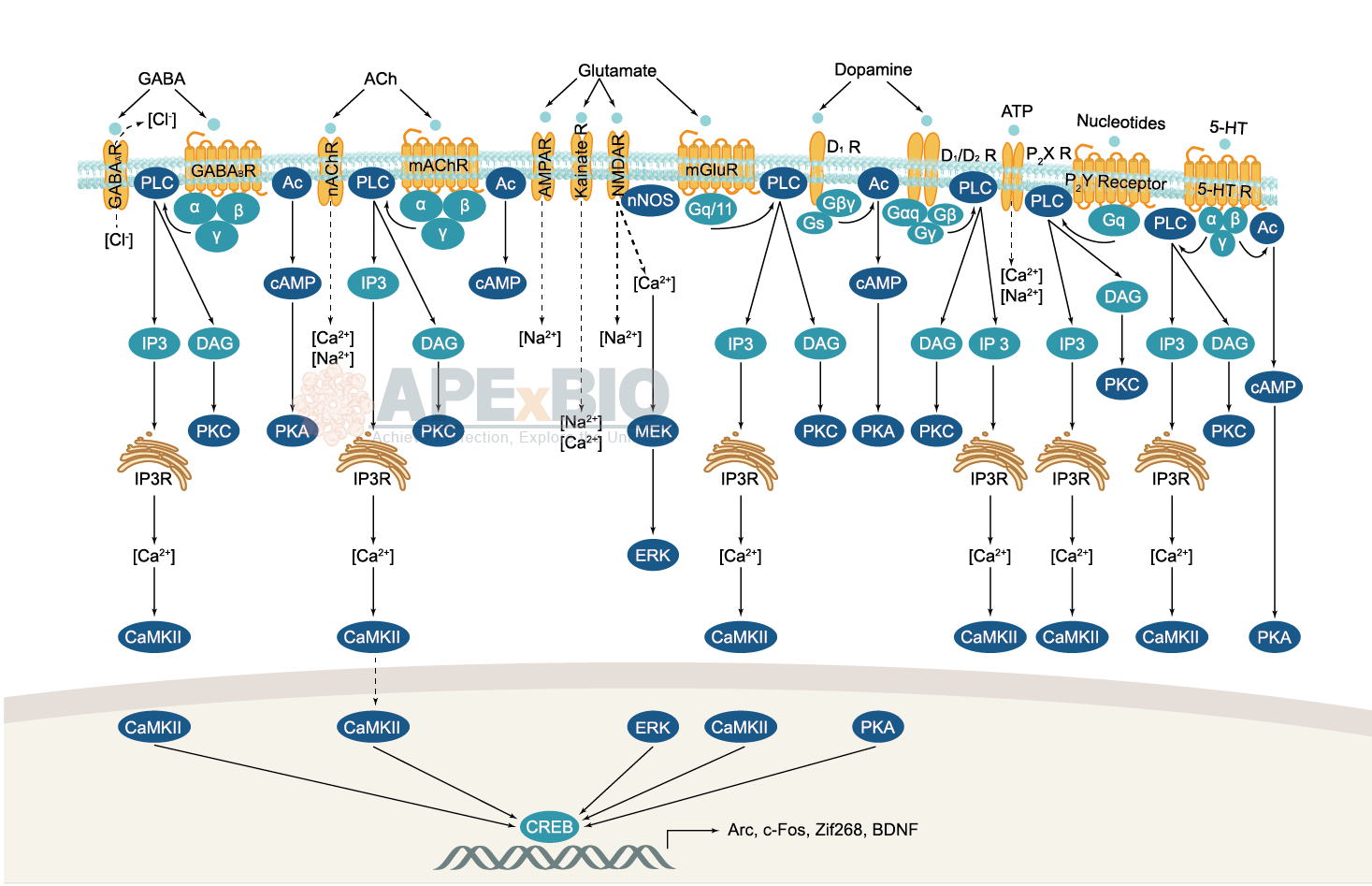
Neurotransmitter receptors function via various G-protein coupled and G-protein independent mechanisms that activate downstream intracellular signaling pathways such as cAMP/PKA, PI3K/AKT, phospholipase A2, and phospholipase C pathways. For instance, dopamine receptors act through adenylate cyclase to activate PKA and other signaling molecules, thereby mediate gene expression through the actions of CREB and other transcription factors. Other neurotransmitters such as NMDAR or AMPAR are associated with ion channels that control flux of Ca2+ and Na+, thus propagating the action potential across the post-synaptic neuron.
Dysfunctions in GABAergic/glutamatergic/serotonergic/dopaminergic pathways result in a broad range of neurological disorders such as chronic pain, neurodegenerative diseases, and insomnia, as well as mental disorders including schizophrenia, bipolar disorder, depression, and addiction.
-
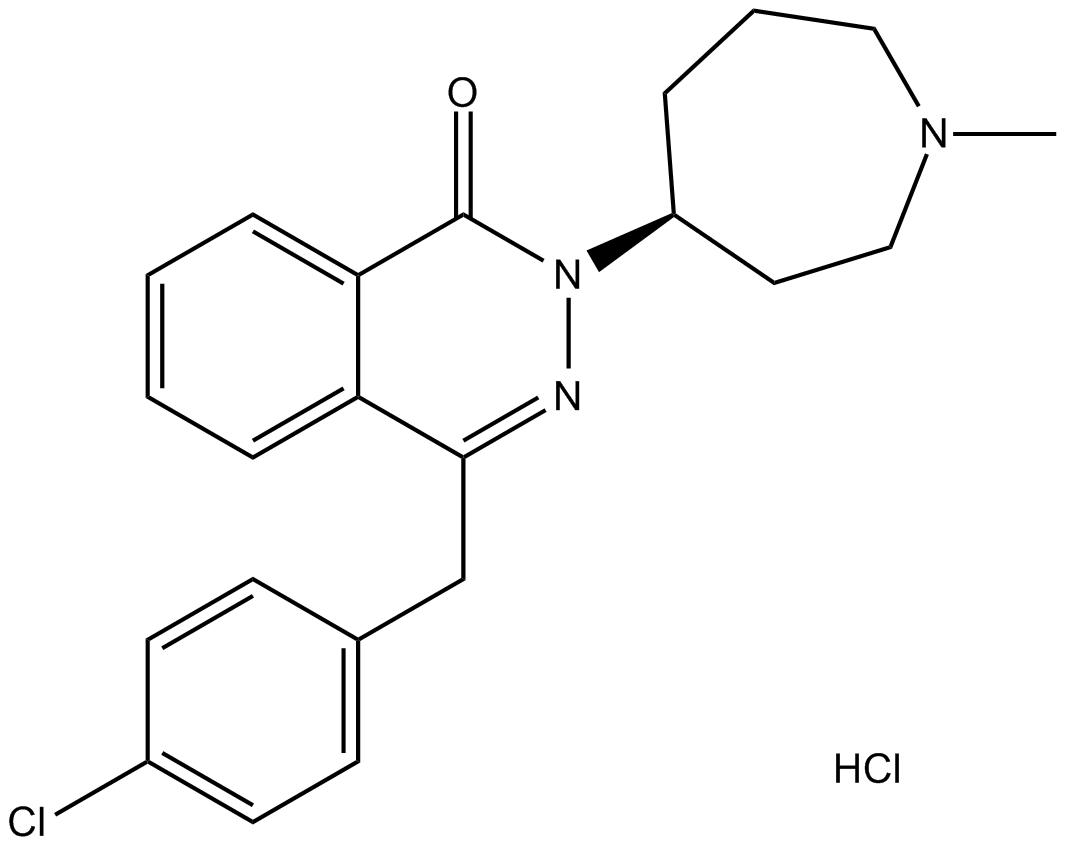 B1568 Azelastine HClTarget: Histamine H1 ReceptorsSummary: Potent, second-generation, selective, histamine receptor antagonist
B1568 Azelastine HClTarget: Histamine H1 ReceptorsSummary: Potent, second-generation, selective, histamine receptor antagonist -
 B1481 DomperidoneSummary: Drug for gastroparesis
B1481 DomperidoneSummary: Drug for gastroparesis -
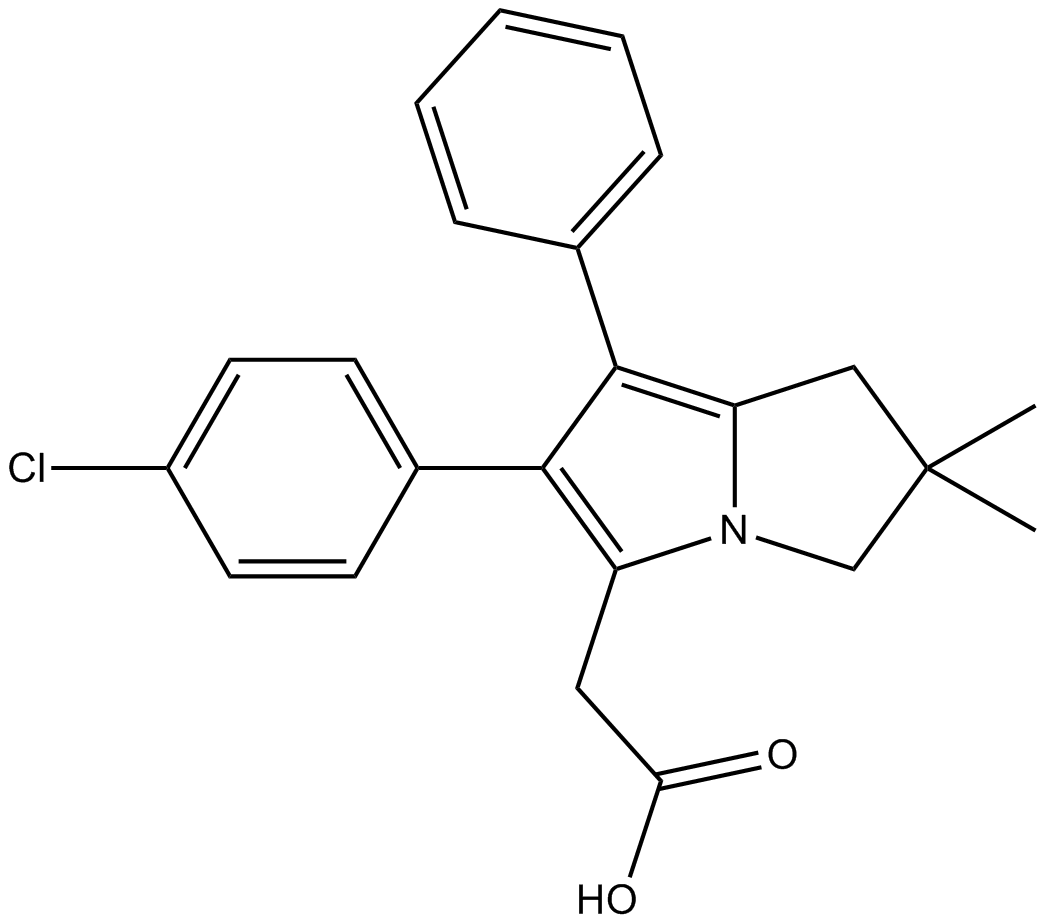 B1448 LicofeloneSummary: COX-1, COX-2 and 5-LOX inhibitor
B1448 LicofeloneSummary: COX-1, COX-2 and 5-LOX inhibitor -
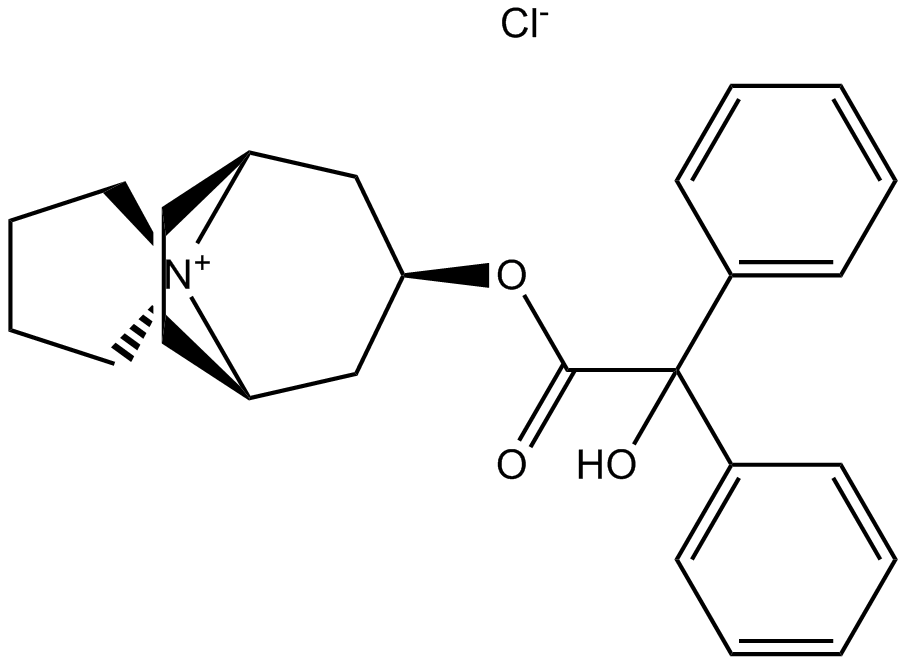 B1616 Trospium chlorideTarget: AChRSummary: Antimuscarinic agent
B1616 Trospium chlorideTarget: AChRSummary: Antimuscarinic agent -
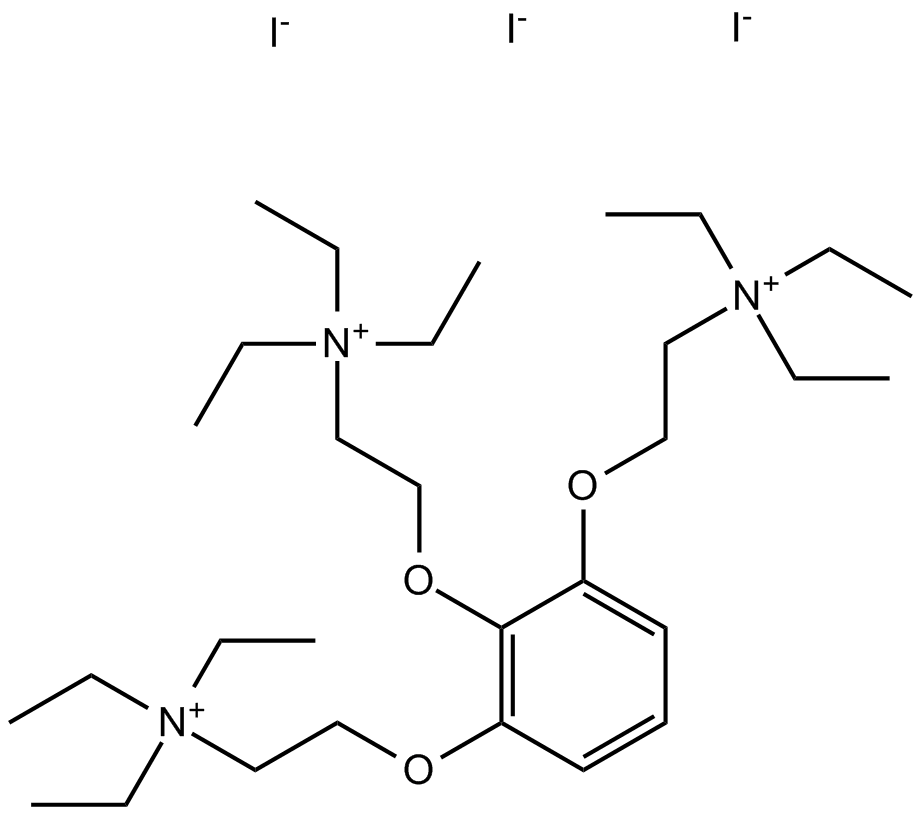 B1610 Gallamine TriethiodideTarget: M2 ReceptorsSummary: Cholinergic receptor blocker
B1610 Gallamine TriethiodideTarget: M2 ReceptorsSummary: Cholinergic receptor blocker -
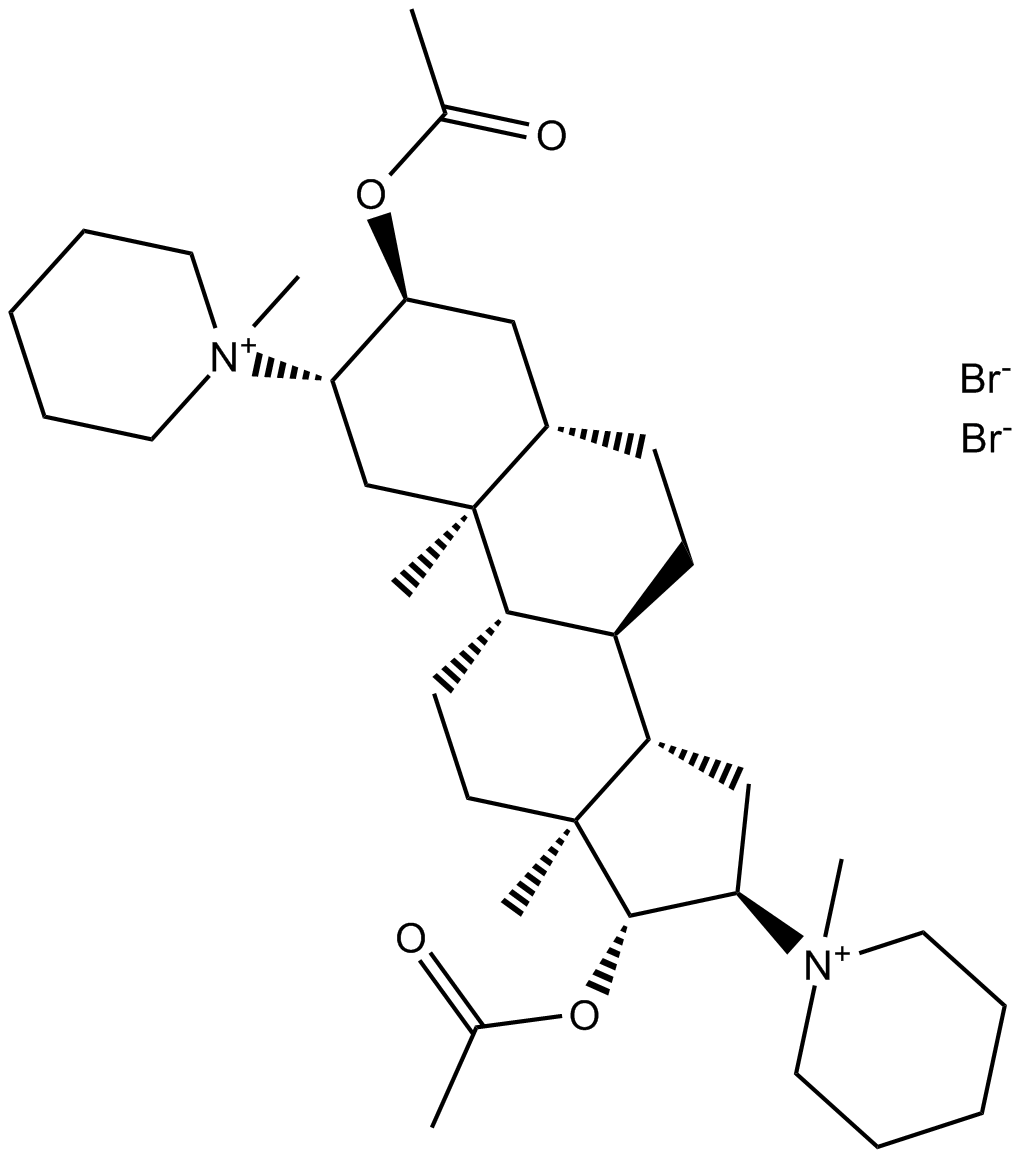 B1612 Pancuronium dibromideTarget: AChRSummary: AChR antagonist
B1612 Pancuronium dibromideTarget: AChRSummary: AChR antagonist -
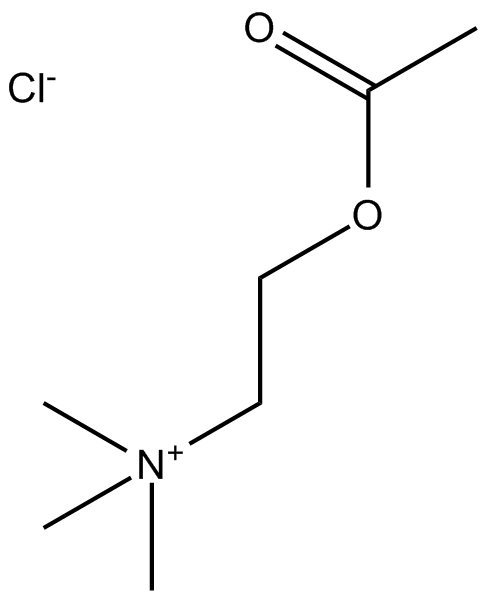 B1596 Acetylcholine ChlorideSummary: Major transmitter at many nervous sites
B1596 Acetylcholine ChlorideSummary: Major transmitter at many nervous sites -
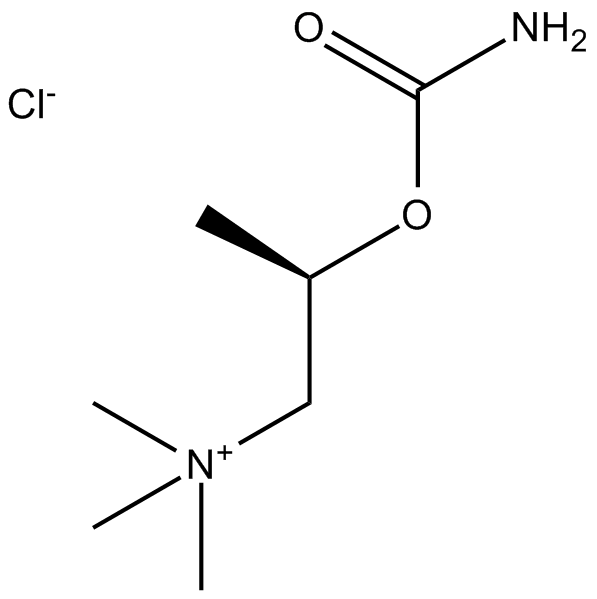 B1599 Bethanechol chlorideSummary: Muscarinic receptor agonist
B1599 Bethanechol chlorideSummary: Muscarinic receptor agonist -
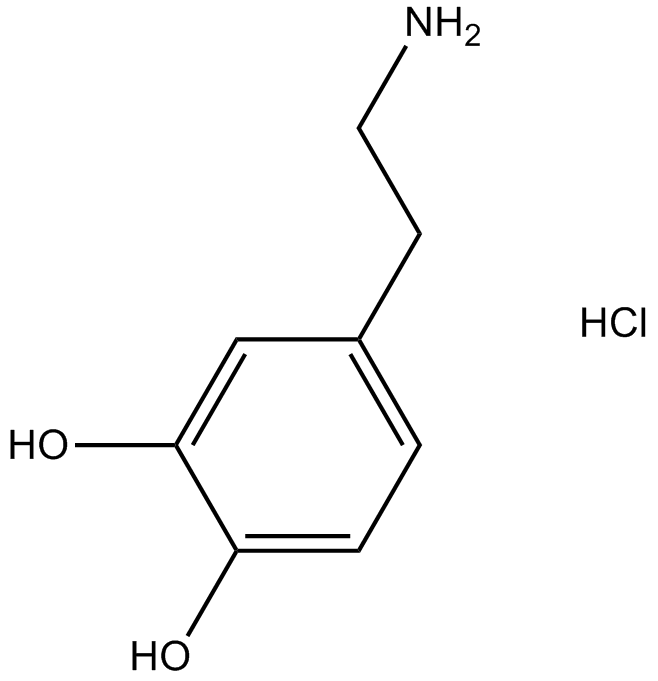 B1482 Dopamine HClSummary: Dopamine D1-5 receptors agonist
B1482 Dopamine HClSummary: Dopamine D1-5 receptors agonist -
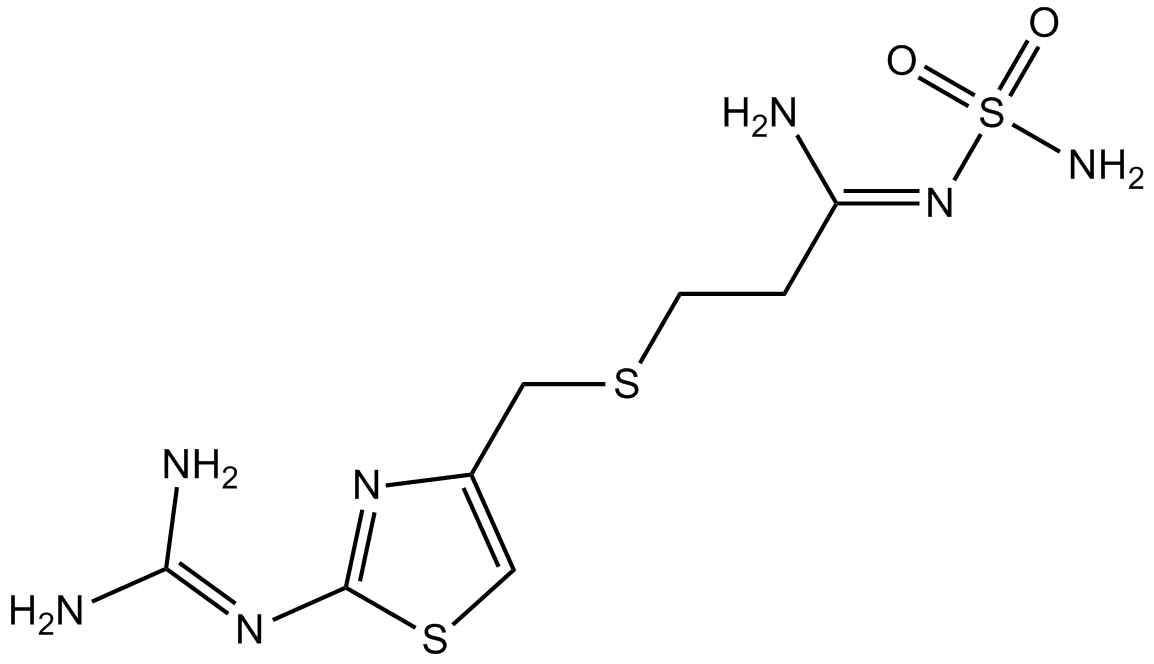 B1560 FamotidineSummary: Histamine H2-receptor antagonist
B1560 FamotidineSummary: Histamine H2-receptor antagonist

